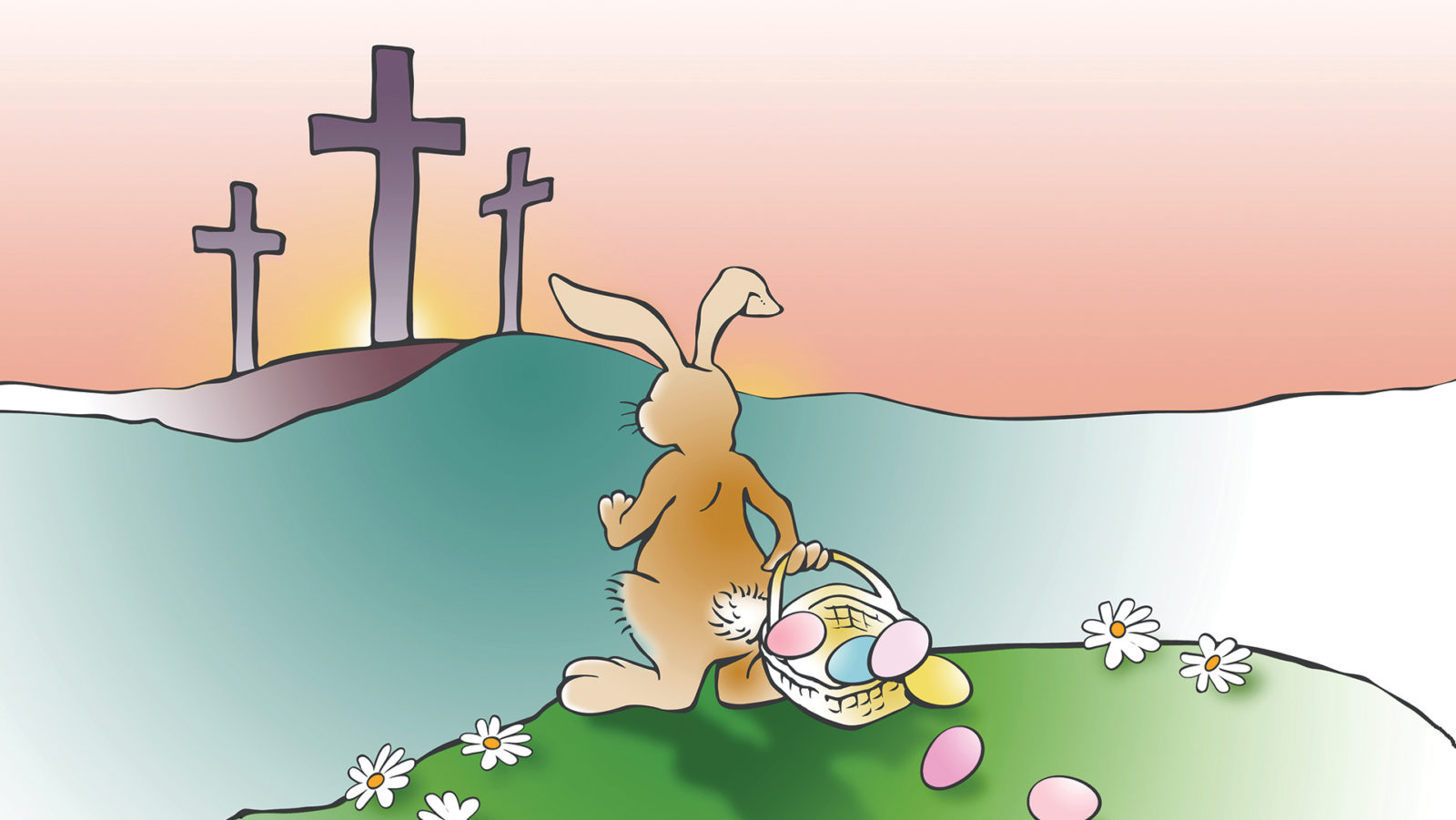If there is one event worth honouring it would, no doubt, be the death and resurrection of Jesus Christ. Every good thing, indeed every bad thing that God turns for good, was attained for us by the cross of Christ. It is this climax in history that the Old Testament sacrificial system and the prophets pointed to—the Messiah coming and taking upon Himself our condemnation, and conquering sin and death. Like an innocent lamb, He died so that we can live. Apart from the death of Christ, sinners get nothing but condemnation. Life, joy, peace and all other blessings were purchased for us at the cost of the death of Jesus. This is why the apostle Paul concluded, “May it never be that I should glory in anything, except in the cross of our Lord Jesus Christ” (Galatians 6:14, author’s translation).
This event is the most important event, not only in human history, but in the history of all the universe. God’s selfless love was displayed on the cross in full array. The only appropriate response is to fall down in worship and surrender. Our whole life should be grounded on it. We can exclaim like the great hymn writer Isaac Watts did, “Love so amazing, so divine, demands my soul, my life, my all!”
As everything is based on this event, our entire lives can express our appreciation of it. We can mark it with the Eucharist. Eucharist comes from the Greek word for “thanks”1. The Gospels use this word when Jesus gave thanks for the bread and wine at the Last Supper and He told us to do the same in remembrance of Him.2 This is why the first Christians used this term for the Lord’s Supper, because it was an expression of thanks—their thanks to God for His amazing love and self-sacrifice.
The death and resurrection of Jesus can be marked by the Lord’s Supper throughout the year but especially on the annual anniversary of the event. This event occurred during Passover.3 Passover was first instituted by God as He freed His people from their bondage in Egypt in order to give them the Promised Land. It is full of symbols that point to a greater spiritual reality—the deliverance God secured for us from the bondage of sin so that we can inherit blessings and eternal life in a land free from the curse of sin. This deliverance was obtained by the death of the Lamb—Jesus Christ (John 1:29). Celebrating this is most appropriate during Passover, which is the 14th day of the first Jewish month (Exodus 12:1-6). Paul urges Christians to celebrate Passover with Jesus and His transforming love as the focus: “Get rid of the old yeast, so that you may be a new unleavened batch—as you really are. For Christ, our Passover lamb, has been sacrificed. Therefore let us keep the Festival, not with the old bread leavened with malice and wickedness, but with the unleavened bread of sincerity and truth” (1 Corinthians 5:7,8, NIV).
On our calendar, Passover falls during March or April, depending on the year, and this is why Christians celebrate Christ’s death and resurrection then, with an adjustment made so it will always fall over a weekend.
Easter
The Greek word for Passover is Pascha. Most languages use a term derived from Pascha for the Christian celebration of Christ’s death and resurrection. Other languages use terms that mean “Resurrection” or “Great Night”. In English, the most commonly used word is Easter.
The origins of the word Easter are debatable. Some say that due to its similar sound to “Ishtar” it must have been derived from the ancient Babylonian goddess of fertility. Historical records, however, fail to prove a clear link between Ishtar and Anglo-Saxon celebrations.
Another theory is that Easter comes from an Anglo-Saxon goddess, Eostre. As this connection rests solely on a reference made by Bede, an 8th century English monk, many historians suggest that Eostre is an invention of Bede and did not exist. No other mentions or venerations of her have been discovered. The idea that celebrations of Eostre were rekindled through Easter a few hundred years after Bede’s time is not evidence-based.
A more likely origin of the term Easter is from the Saxon word for resurrection—Auferstehen—where “erste” means first and “stehen” means “stand”. If this is the case, then Easter is a very appropriate term as it is a celebration of the resurrection of Jesus, the firstborn of the dead (Colossians 1:18).
Because the origins of the term are ambiguous, the meaning we attach to Easter is of far greater significance. Luther and Tyndale had no problem with the term in their translations of the Bible.4 This shows that its meaning was unmistakably Christian in their time regardless of its origins. While the terms “Good Friday” and “Resurrection Sunday” are superior as they have clear links to the events of Christ’s death and resurrection, “Easter” is still appropriate so long as it retains its Christian association.
Bunnies and eggs
The symbolism of bunnies and eggs stretches far and wide. The earliest records show a cosmic egg as part of an ancient Egyptian creation story, which was adopted by other ancient cultures. Eggs have also been used to celebrate spring since ancient times. In some Christian traditions, the observance of Lent involves abstinence from meat and eggs. This period of fasting ends on Easter, which follows on with an eager consumption of eggs. Eggs are also associated with the resurrection. From the outside, an egg appears as a lifeless stone, yet inside it nurtures life. Just as the grave keeps life locked in, eggs became a symbol for the tomb from which Christ rose from death. [pullquote]
Hares have been a symbol of death and rebirth ever since ancient times in the Levant. They are also found inscribed on ancient Greek gravestones. This symbolism was adopted by ancient Rome, which spread it all the way up to England.5 In areas where rabbits were more common than hares the symbolism shifted to them. Coptic and Byzantine finds reveal that Christians have used the hare as a symbol of life at least since the 4th century.
There is no doubt that hares and eggs have also been used by pagans. This does not make them inherently evil because symbols adapt a meaning that is attached to them. Even in the Bible a symbol can represent more than one thing. A goat can represent Jesus, Greece, an unrighteous person or even Satan. The context helps in understanding which of these vastly different meanings is represented by the use of that one symbol. The same is true of the cross. There are some who say that the cross is a pagan symbol, yet Paul refers to the cross as representing Christ’s sacrifice (Galatians 5:11; 6:14). As Easter bunnies and eggs are now ubiquitously linked to the Christian celebration of Christ’s death and resurrection in our culture, there is no need to debate theories of origin, many of which are not evidence-based.
One of the things that makes a symbol inherently pagan is not just its use but how it is used in worship. This is considered idolatry in the Bible. In the desert experience of Israel, the people encountered venomous snakes and were instructed to look at a bronze serpent on a pole. What was a symbol of salvation became a curse to Israel when they started worshipping that symbol (Numbers 21:4-9; 2 Kings 18:4).
The same is true of the golden calf worship (Exodus 32; 1 Kings 12:26-30). The calf was not used as a symbol of Christ as in the Mosaic sacrificial system (Micah 6:6; Hebrews 9:11,12), but was worshipped (Exodus 32:8). When we worship an object we not only reduce our picture of God but consequently reduce ourselves.
Whether calves, goats, the cross or whatever symbol is used, we should be careful not to worship it. It is not the symbol employed but its meaning and treatment that determines whether it is pagan or a form of religious syncretism. Paul had no problem with eating food sacrificed to idols, but recognised that some who had done so as part of their worship before they became Christians would struggle disassociating that meaning from the food and should therefore avoid it (Romans 14:14; 1 Corinthians 8 and 10). What was a pagan religious rite to some was nothing to Paul as he did not attach a pagan meaning to it.
The best way to celebrate Easter is to focus it on Jesus. While this is easily said, it requires a determined effort in our fast-paced consumerism. Take time to contemplate the all-important events of the cross. Use this wonderful opportunity to share the gospel with children and those outside the faith. Whatever symbols are employed, use them to illustrate the great spiritual truths of the death and resurrection of Christ. This event is not to be passed by lightly. It is a time of reflection and recalibration so that we come out of it transformed by the power of God’s great love.
Emanuel Millen is pastor at Yarra Valley church and assistant pastor at Warburton church, Victoria. He has a passion for sharing Jesus with others and delving into His Word.






